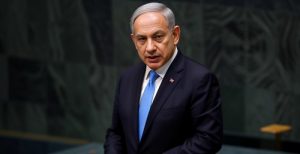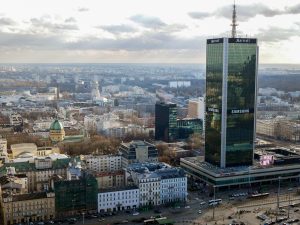Energy crisis: How worried should we be about the lights going out?
The latest information on the risks facing gas and electricity supplies suggests there is an increased risk of blackouts this winter – but they can be prevented.
National Grid’s Electricity System Operator’s (ESO) updated report on the pressures facing power generators revealed contingency plans for three-hour blackouts in areas where gas-fuelled power falls short of demand.
A separate National Grid Gas Transmission study suggested that the country would be relying more on LNG (liquefied natural gas) supplies from the US and Qatar this winter.
That is because of uncertainty over whether traditional EU imports would be available because of the squeeze on supplies in the bloc following Russia’s war in Ukraine – intensifying pressure on the UK power grid as a result.
Here, Sky News examines the pressures on UK supplies, what may be done to help keep the lights on and just how perilous the country’s situation could become if a prolonged cold snap arrives.
How worried should I be about the outlook reports?
There is no getting away from the fact that these updates make for worse reading that the “early view” released by the ESO in July.
Then, it did not foresee the prospect of the lights going out, despite obvious pressure on supplies across Europe.
Thursday’s warning could not be starker, which is why they hope the risk of blackouts can be averted through an energy-saving scheme that will pay households not to use electricity-heavy products during peak hours and keep five coal-powered generators, that would otherwise have closed, open and on standby. More on the energy-saving scheme later.
Why is gas the main concern?
Gas-fired power stations account for more than 40% of UK electricity generation while gas is also responsible for heating the vast majority of homes.
Natural gas supplies have been severely disrupted since the war – forcing wholesale prices up and threatening much of continental Europe with shortages as most, such as Germany, have previously relied on gas from Russia.
While the UK holds its own in the warmer months, thanks to a mix of nuclear, wind, North Sea gas output and imports from Norway, Qatar and the US, we tend to lean more on the continent during winter to balance the gap between supply and demand.
This is because we lack gas storage.
But we have more gas than we need…
It’s true. Currently.
The UK has been exporting gas at record volumes since late spring to help EU nations fill their storage after Vladimir Putin turned off the taps.
The lack of gas storage, however, means that we tend to rely on imports in times of high demand such as winter.
Only 70% of British gas supplies last time around came from the North Sea and Norway. It meant that supplies via ship of LNG and from the continent accounted for the rest.
Read more on Sky News:
Plan for three-hour power blackouts to prioritise heating in event of gas shortages
Amid energy security and price crisis, key winter outlook report takes on particular significance
What are the main threats?
The big one has to be, energy experts agree, the risk of a prolonged cold snap.
Unplanned power station outages too, as well as the inability to import electricity from Europe if there are, for example, nuclear power plant outages in France or gas shortages across the continent. Gas shortages will reduce the ability for EU countries to generate electricity.
The Gas Winter Outlook saw the potential for the shortfall in gas supplies within continental Europe to impact the UK’s ability to secure imports, should they be required.
As a result, it saw LNG acting as the primary source of supply flexibility during the winter months.
“In the unlikely event there is insufficient gas supply available in GB to meet demand, and should the market be unable to resolve the resultant imbalance, we have the tools required to ensure the safety and integrity of the gas system in the event of a Gas Supply Emergency.
“All possible measures would be taken to minimise the extent to which we use these tools”, National Grid said.
What are those possible measures and what is a Gas Supply Emergency?
A Gas Supply Emergency can be activated in stages if suppliers are unable to guarantee gas for homes and businesses.
It could mean that some customers, starting with the largest industrial consumers, will be asked to stop using gas for a temporary period.
On the power side, the ability for coal-fired power stations to restart generation has been retained, the ESO previously announced, to help cover any imbalance between supply and demand for electricity.
It has been utilised, most recently, early this year because of poor wind power generation – due to a lack of… wind.
Read more: How much will my bills increase now the energy price cap comes into effect
So what does this all mean for the lights?
The message seems to be that the lights should not go out – but we need your help to achieve it.
The “demand flexibility service” will run from November to March and households can sign up via their energy supplier.
In return for not charging your electric car or running dishwashers, tumble driers or washing machines during times of peak energy use during the day, you will be paid.
It is expected to be implemented 12 times, whatever happens, to ensure people get rewarded for being part of the scheme.
It is hoped it will deliver 2GW of power savings to balance supply and demand, preventing any disruption.
Has anything like the ‘demand flexibility service’ been done before?
Yes, on a big scale for industrial users of energy. Companies can be paid not to use power during times of increased demand in order to balance electricity supply and demand.
A small-scale trial of incentivising households to reduce electricity at peak times was carried out earlier this year with energy company Octopus Energy.
From that trial, the National Grid has been able to say, “we successfully proved the proof of concept for a demand flexibility service”.
Work has been going on between the National Grid, suppliers, aggregators and consumer groups to scale up to making demand flexibility a national service.
Has this been done before anywhere else?
Countries across Europe have been working on plans to reduce their electricity demand.
Just last month France‘s national grid operator said it might have to ask households, local government and businesses to reduce their consumption at peak times. It aims to reduce electricity use by 10%.
Germany has planned to reduce its gas usage by 2% through a range of public and private measures. From last month most public buildings have not been heated above 19C, public monuments have not been lit up and heating private swimming pools has been banned.
Will electricity prices come down?
Not yet. The ESO said on Thursday that, notwithstanding the mitigation measures, it is “highly likely” that the wholesale price of gas and electricity will remain “very high” throughout winter.


